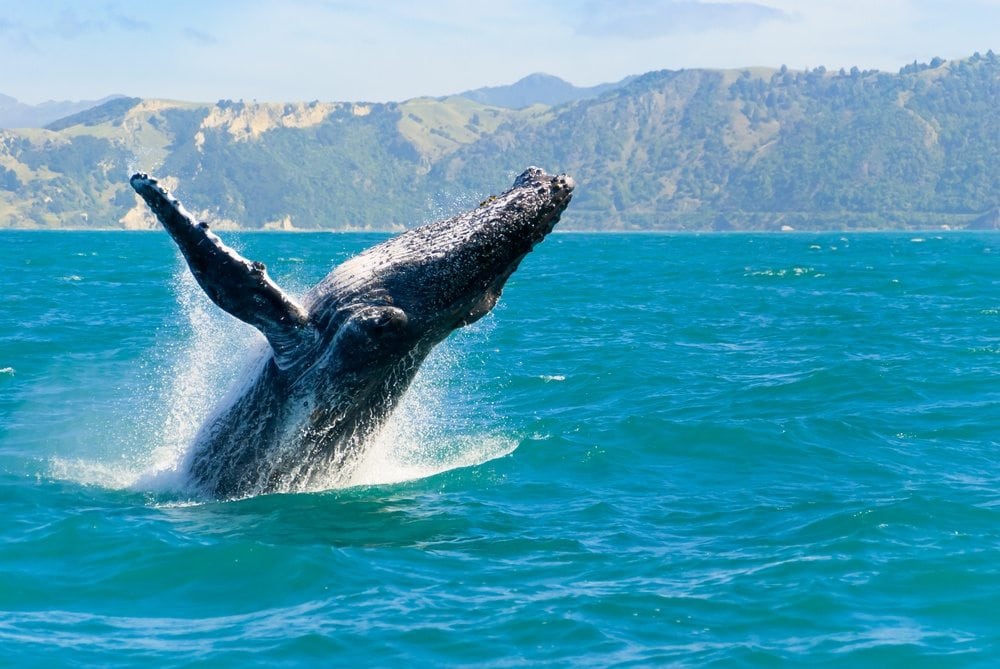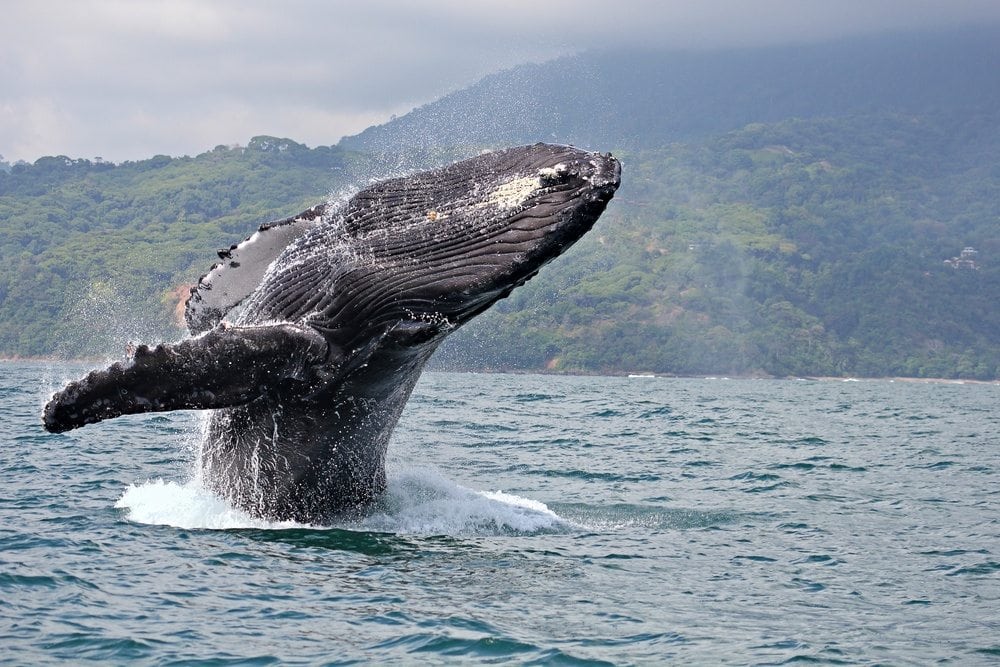Experiencing humpback whales up close is unforgettable. These majestic creatures are as massive as they are mysterious, and witnessing them in their natural habitat is an experience you’ll treasure forever. If you’re on Oahu, don’t miss the chance to see these gentle giants in person! In the meantime, here are some fascinating humpback whale facts to fuel your excitement.
You can see Humpback Whales in their natural habitat on our Whale Watching Tour; Whales and You!
Join Whales and You, Oahu’s premier whale-watching experience, to witness wild humpback whales in their natural habitat.
LEARN MORE ABOUT WHALE WATCHING TOUR IN OAHU
1. Humpback Whales Are Incredibly Intelligent
Humpback whales are not only smart—they’re also quite vocal! Each population communicates in its unique dialect and performs distinctive “whale songs.” Interestingly, baby whales aren’t born with these songs; they learn them from others around them. And surprisingly, only male whales sing!
2. Whale Songs Are Long and LOUD
A humpback whale’s song can be heard up to 20 miles away and may last up to 20 minutes! Males often repeat the same song for hours, creating an iconic soundtrack of the deep.
3. Diet: All About Krill
A diet of tiny krill keeps these giants going! Humpback whales consume up to 1.5 tons of krill daily to sustain their massive size. Though small, krill are a vital part of the humpback whale’s survival.
4. Females Rule in Size
Did you know female humpback whales are larger than males? Female humpbacks can reach about 50 feet in length, while males can be up to 10 feet shorter. It’s a rare case where the females outweigh the males in size!
5. They’re Really, Really Big
From their 18-foot-wide tail to their large flippers—one-third of their body length—these whales are enormous. A humpback can weigh up to 40 tons, which is around 20 times the weight of an average car!

6. Globe-Trotting Giants
You might see humpback whales in warm, tropical waters or colder northern seas. They’re true travelers, migrating across the Arctic, Atlantic, and Pacific Oceans. From Hawaii to Alaska, even the Arabian Sea, these whales cover a lot of ground.
7. Whale Populations: A Story of Survival
Today’s humpback whale population is around 40,000—a significant recovery, yet only about 35% of what it once was. Fortunately, conservation efforts have helped protect these incredible creatures from hunting, but challenges remain.
8. Breaching and Splashing Spectacles
Humpbacks love to breach—jumping out of the water and creating giant splashes. They also poke their heads out and slap their tails on the surface. While scientists aren’t sure why they do this, breaching may be a way for them to communicate, play, or even show off.
9. Whale Pregnancy: A Year-Long Journey
Female humpbacks have a gestation period of about a year. After giving birth every two or three years, each calf requires approximately 100 pounds of milk daily—a significant commitment for a mother whale.
10. Mostly Solo Travelers
Though some whale populations are large, humpbacks typically travel in small groups, called pods, of two to four whales. These pods often consist of a mother and her calves or close whale friends.

11. Record-Breaking Migrations
Humpbacks undertake one of the longest migrations of any mammal, covering up to 16,000 miles annually. Their seasonal migration includes summer feeding in colder waters and winter mating in warmer regions.
12. Toothless, But Mighty
Humpbacks don’t have teeth. Instead, they use baleen plates that act like a filter, helping them separate krill and other small marine animals from the water they take in.
13. Unique Breathers
These whales have two blowholes—one for each lung! Their lungs are about the size of a small car, and unlike humans, they need to think about every breath. To sleep, they shut down only half of their brain at a time, ensuring they continue to breathe.
14. One-of-a-Kind Markings
Each humpback whale has unique markings on its underbelly, much like human fingerprints. Researchers use these distinctive patterns to identify and track individual whales.
Ready to See Humpback Whales in Person?
Hawaii’s humpback whale season runs from November to May. On the Whales and You Tour, you may spot these magnificent creatures in action. Our tour also offers the chance to swim with wild dolphins, snorkel with sea turtles, and possibly witness humpback whales firsthand.
Book now to reserve your spot on an unforgettable adventure!
BOOK NOW: Whale Watching Tour!











